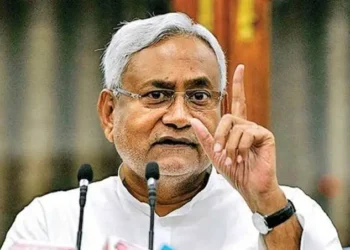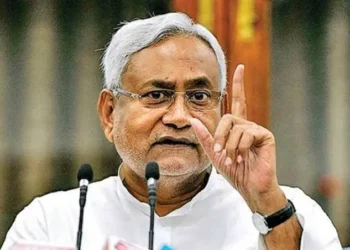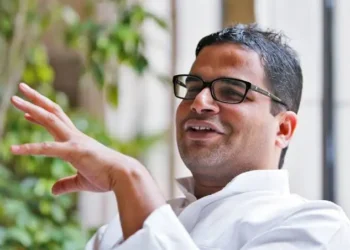Voices of Valor: As investigators probe the Ahmedabad crash, tributes pour in for the crew who upheld professionalism and courage in the face of catastrophe.
BY PC Bureau
June 12, 2025: The skies above Ahmedabad turned tragic on Thursday as Air India Flight AI171, a Boeing 787 Dreamliner bound for London Gatwick, crashed just minutes after takeoff. The aircraft, carrying 242 souls—230 passengers and 12 crew members—plummeted into a residential area near Meghaninagar, leaving only one survivor. At the heart of this catastrophe were the 12 crew members, led by Captain Sumeet Sabharwal and First Officer Clive Kunder, whose final act was a desperate Mayday call signaling their fight to save those aboard. This is the story of their lives, their professionalism, and the legacy they leave behind.
The Captain and His Co-Pilot: Pillars of the Cockpit
Captain Sumeet Sabharwal, 48, was no ordinary pilot. With over 8,200 hours of flight experience, he was a Line Training Captain (LTC), entrusted not only with commanding aircraft but also mentoring new pilots. Colleagues described him as a “Boeing man” with a calm demeanor and a knack for instilling confidence. “He flew giants like the 777 and 787 with such precision,” posted an Air India pilot on X, echoing sentiments of awe. Sabharwal’s family, arriving at Jal Vayu Building in Mumbai after the crash, spoke of his passion for aviation, a dream he pursued since his youth in Delhi.
First Officer Clive Kunder, 32, complemented Sabharwal with his 1,100 hours of flying experience. Though younger, Kunder was known for his sharp instincts and dedication. A post on X by a former classmate recalled his relentless work ethic during training: “Clive was always the first to volunteer for extra simulator sessions.” Together, Sabharwal and Kunder formed a formidable team, their synergy evident in the cockpit of AI171.
READ: Air India Crash: Jamie Ray’s ‘Goodbye India’ Video Haunts the Internet
The Cabin Crew: Unsung Heroes of the Skies
The 10 cabin crew members were the backbone of the flight, ensuring passenger safety and comfort. Among them, senior crew members Shradha Dhavan and Aparna Mahadik stood out for their leadership. Dhavan, 39, was remembered by passengers’ families for her warm smile and efficiency. A tribute on X from a frequent flyer read, “Shradha made every flight feel like home. She didn’t deserve this.” Mahadik, 42, had a personal connection that added a layer of poignancy: she was related to Maharashtra NCP chief Sunil Tatkare, who shared his grief publicly. “Aparna was the daughter-in-law of my younger sister. Her loss is unbearable,” Tatkare told PTI.
Prayers and condolences to the devastated families of all on board Ai 171 that crashed after take off. This is the Captain Sumeet Sabharwal, whose last message was “Mayday…no thrust, losing power, unable to lift” – 32 seconds later the plans crashed. pic.twitter.com/syr34j0gq1
— barkha dutt (@BDUTT) June 12, 2025
The crew’s diversity reflected the global nature of aviation: 169 Indians, 53 British, 7 Portuguese, and 1 Canadian were among the passengers they served. Their training, rigorous and relentless, prepared them for emergencies, yet nothing could have fully equipped them for the sudden crisis that unfolded at 1:39 PM IST.
The Mayday Call
Moments after takeoff from runway 23 at Sardar Vallabhbhai Patel International Airport, Sabharwal issued a Mayday call to air traffic control (ATC), signaling a critical emergency. The Directorate General of Civil Aviation (DGCA) confirmed the call, noting the aircraft reached an altitude of just 825 feet before losing contact. “They gave a Mayday, but no response followed,” a DGCA official stated. The brevity of the call—issued within 29 seconds of climbing—underscored the crew’s composure under unimaginable pressure.
Both were young cabin crew from #Manipur. Perhaps just started careers with dreams to rule the sky.
Angels of the sky.
Rest In Peace 🙏. pic.twitter.com/uSi49bdToi
— Meitei Heritage Society (@meiteiheritage) June 12, 2025
READ: AI171 Crash: Whistleblower’s Called Dreamliner ‘Time Bomb’
Aviation experts speculate the Mayday call points to a catastrophic failure, possibly mechanical or an engine malfunction, though the “black box” recordings will provide clarity. “To issue a Mayday so quickly shows they were fighting to the end,” said a retired Air India captain on X. The call, now a haunting symbol of their resolve, has sparked tributes like, “They gave everything to save us,” alongside crew photos shared widely online.
Tributes Pour In: A Nation Mourns
The crash, which claimed 241 lives, including all 12 crew members, has united India and beyond in grief. Air India colleagues shared stories of Sabharwal’s mentorship, with one posting, “He trained me to stay calm in a storm. He lived that lesson.” Passengers’ families praised the cabin crew’s service, recalling small acts of kindness—like Dhavan helping an elderly passenger with luggage or Mahadik calming a nervous flyer.
High-profile figures joined the chorus of tributes. Home Minister Amit Shah assured assistance to Gujarat’s Chief Minister, while Bollywood actor Riteish Deshmukh called the accident “tragic.” Former Gujarat CM Vijay Rupani, among the passengers, was mourned alongside the crew. The Tata Group, Air India’s parent company, announced ₹1 crore compensation for each victim’s kin, a gesture acknowledging the scale of loss.
A Viral Legacy: Heroes in Uniform
Images of the crew in their crisp Air India uniforms, shared by families and colleagues, have gone viral on X, capturing their pride and professionalism. One photo, showing Sabharwal smiling in the cockpit, carried the caption, “A legend who fought till the last second.” Another, of Dhavan and Mahadik laughing during a layover, humanized the crew’s camaraderie. These visuals, paired with stories of their bravery, have struck an emotional chord, amplifying the global outpouring of grief.
The investigation, led by the DGCA and Aircraft Accident Investigation Bureau, continues to probe the crash’s cause. For now, the world remembers Captain Sumeet Sabharwal, First Officer Clive Kunder, Shradha Dhavan, Aparna Mahadik, and their eight colleagues as heroes who faced the ultimate test. Their final moments, marked by that Mayday call, were not just a cry for help but a testament to their unwavering duty.













